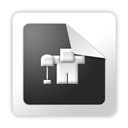
Introduction to motherboards
The primary component of a computer is the motherboard (sometimes called the "mainboard"). The motherboard is the hub which is used to connect all of the computer's essential components.
The motherboard acts as a "parent" board, which takes the form of a large printed circuit with connectors for expansion cards, memory modules, the processor, etc.
Characteristics
There are several ways in which a motherboard can be characterized, in particular the following:
* the form factor,
* the chipset,
* the type of processor socket used,
* the input-output connectors.
Motherboard form factor
The term "form factor" is normally used to refer to the motherboard's geometry, dimension, arrangement, and electrical requirements. In order to build motherboards which can be used in different brands of cases, a few standards have been developed:
* ATX: The ATX format is an upgrade to baby-AT. It was intended to improve ease of use. The connection device on ATX motherboard is designed to make plugging in peripherals as easy as possible (for example, the IDE connectors are located besides the disks.)
The chipset
The chipset is an electronic circuit whose job is to coordinate data transfer between the various components of the computer (including the processor and memory). As the chipset is integrated into the motherboard , its is important to choose a motherboard, it is important to choose a motherboard which includes a recent chipset, in order to maximize the computer's upgrade-ability.
The processor socket
The processor (also called the microprocessor) is the computer's brain. It ruins programs using a set of instructions. The processor is characterized by its frequency, the rate at which it executes instructions. This means that an 800 MHz processor can carry out 800 million operations per second.
The motherboard has a slot (sometimes several, for multi-processor motherboards) into which the processor is inserted, called the processor socket or slot.
*Slot: a rectangular connector into which the processor is mounted vertically.
*Socket: In addition to being the general term, it also refers more specifically to a square-shaped connector with many small connectors into which the processor is directly inserted.
The input-output connectors
The motherboard has a certain number of input/output sockets found on the rear panel.

Most motherboards have the following connectors:
* A serial/series port, for connecting old peripherals;
* A parallel port, mainly for connecting old printers;
* USB ports (1.1, low-speed, or 2.0, high-speed), for connecting more recent peripherals;
* RJ45 connector (called LAN or ethernet port) used for connecting the computer to a network. It corresponds to a network card integrated into the motherboard;
* VGA connector (called SUB-D15), for connecting a monitor. This connector interfaces with the built-in graphics card;
* Audio plugs (Line-in, Line-out and microphone), for connecting sound speakers or a hi-fi system, as well as a microphone. This connector interfaces with built in sound card;















0 comments:
Post a Comment